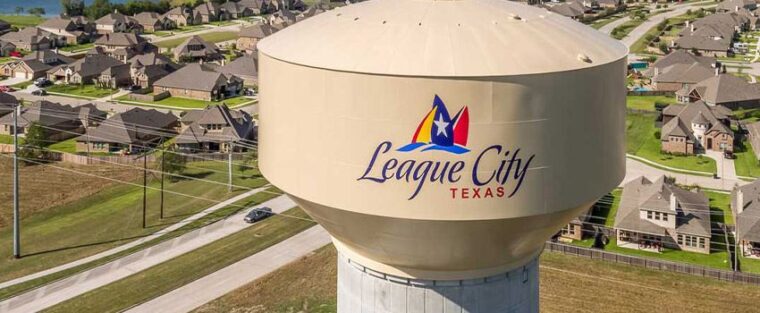
The Houston suburb of League City updated its water and wastewater master plans on March 26. The water plans were last updated in 2018.
The plans were designed to ensure the city can provide adequate water supplies and handle increased wastewater flow through projects designed to accommodate growth. The city hopes to finish building out its water and wastewater infrastructure by 2040.
The population is expected to grow by 2.5% over the next 10 years and more than double by the anticipated buildout year. As part of the master plans, the city will ensure that the water system meets Texas Commission on Environmental Quality (TCEQ) requirements.
The city currently faces challenges with operating multiple small water wells and booster stations, aging infrastructure and pipelines that function as both transmission and distribution lines. The city’s wastewater infrastructure includes 78 lift stations and two water reclamation facilities.
League City currently has access to 28 million gallons of water per day. However, the plans estimate that the city will need to supply an additional 20 million gallons per day (MGD). In addition, while the city has emergency well capacity, the city is restricted to 10% of the total annual water supply from groundwater sources without facing fines.
To help address outstanding issues, League City developed five- and 10-year plans outlining its future water supply, infrastructure and operational needs. City officials are also working on an agreement to reserve the projected 20 MGD capacity from the Southeast Water Purification Plant (SEWPP). The city will use $156 million and coordinate with Houston to expand the SEWPP’s capacity, ensuring League City can meet future demands and long-term needs.
The city will expand the Southwest Water Reclamation Facility to eight MGD by 2028 and further expand its treatment capacity to 12 MGD during the buildout planning period after 2033. League City will modify and improve its wastewater infrastructure to increase system reliability, simply system operations, convey peak we weather flows and reduce surcharging and sanitary sewer overflows.
In the plan, League City’s immediate upgrades – some of which are currently ongoing – include a $12.85 million well, generator and booster pump station for Calder Road South, $12.63 million for raw water storage, a $5.23 million chemical feed storage building and $4.54 million for water lines on the city’s west side.
Photo courtesy of League City
The post Houston suburb updates water, wastewater master plans to accommodate future growth appeared first on Government Market News.
